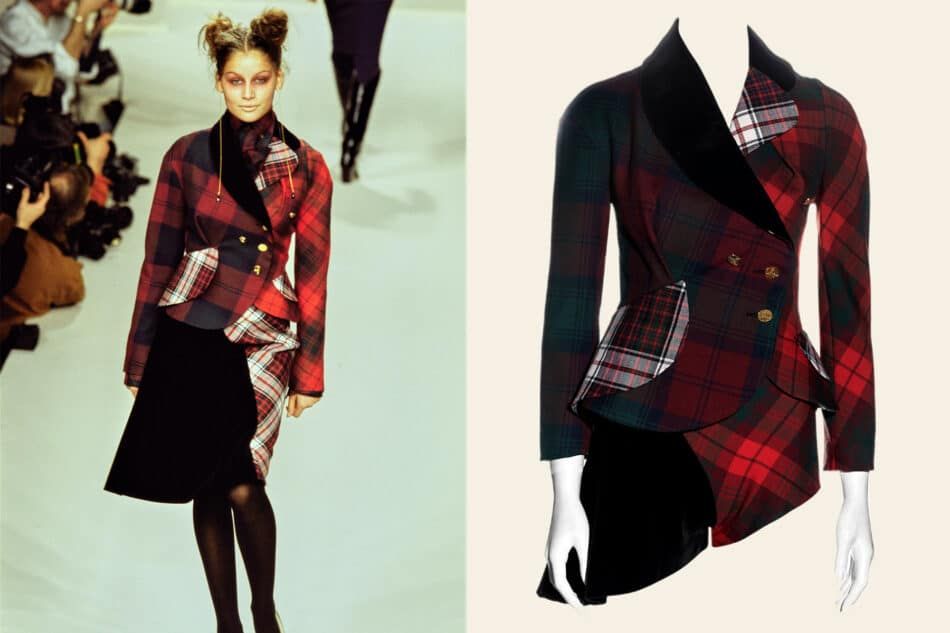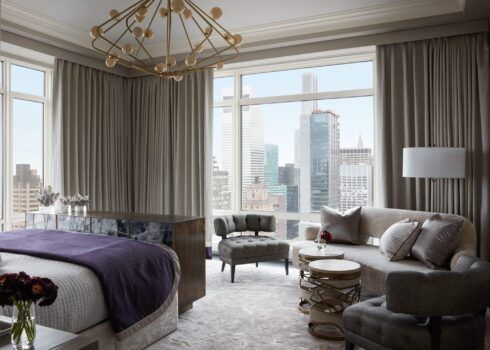
In cut, textile and tailoring, this jacket-and-shorts suit is iconic Vivienne Westwood. The designer was moved by parallel passions: a love of British design history and an unflinching urge to put a stick in the eye of authority. And tartan fulfilled both desires. Plucking the pattern from the wardrobes of the British royal family at Balmoral Castle, Westwood reimagined it for the ripped and pinned anarchist punk look of 1970s and ’80s London. Who’s in power now, Mrs. Thatcher?
The ensemble, from Westwood’s Fall/Winter 1996–97 Storm in a Teacup collection and offered by London’s One of a Kind Archive, uses the extreme asymmetry of a tartan mash-up to confront, according to Westwood, “the horror of uniformity and minimalism.” By then, the Scottish textile was a mainstay of her collections. And it continued to be identified with her in death: After she passed away, last December at age 81, her intimate funeral for family was held in a country church adorned with $50,000 worth of Harris Tweed tartan (the memorial service was packed with celebrities wearing her designs).

“From anarchy, disenfranchisement and unemployment to absolute fantasy, Westwood’s work presents a narrative of British culture and style,” says Patrick Michael Hughes, a fashion culture and decorative arts historian and associate teaching professor at Parsons School of Design. “The Storm in a Teacup collection came out during a period of romance in British fashion. But Westwood was giving us a new chapter — not country sweet, like Laura Ashley. Westwood was showing the romance of the city.”
The designer likely would have agreed. Of her best design, she once said, “There’s something heroic to it. It’s got to cut a figure, it’s got to step out, it’s got to say, ‘Hi.’ ”





